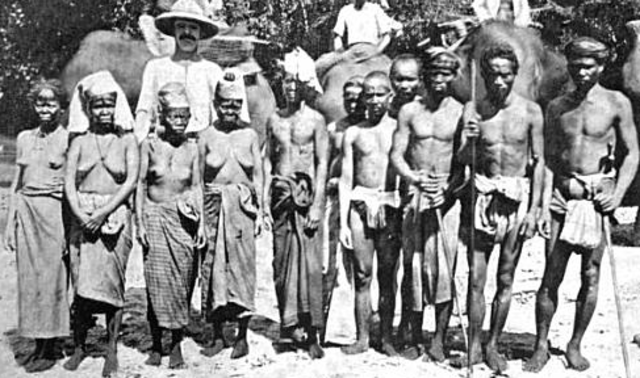There have been theories in the past that Palaeolithic hunter-gatherers lived in Taiwan even before the Neolithic Austronesian farming communities appeared. Indigenous tribes in Taiwan have been telling stories of 'short, dark-skinned' Negrito people living in the remote mountains thousands of years before they arrived.
But evidence of their existence is hard to come by not until researchers found a 6,000-year-old skull of a female individual with the same characteristics as the indigenous Negritos found in Southeast Asia, particularly in northern Luzon, MailOnline reported. Their DNA resembles African samples and features of the cranium look like the Negritos in the Philippines and South Africa.

Legendary Negritos in Taiwan
Per the study, titled "Negritos in Taiwan and the wider prehistory of Southeast Asia: new discovery from the Xiaoma Caves" published in World Archaeology, the term 'Negrito' is a Spanish diminutive word for negro that describes a little black person. The term was first used in the 16th century when Spanish missionaries used it to describe hunter-gatherers in the Philippines.
Negrito groups are characterized by their short stature, dark skin, and fuzzy hair that is similar to their neighboring regions, such as the Mani in Thailand, the Semang groups in Malaysia, and the Andamanese in the Andaman Islands.
Ass MailOnline reports all but one of the 16 recognized Austronesian groups in Taiwan have similar legends about Negrito people. Their history is divided into three: during the Chinese Qing Dynasty from 1683 to 1895, the Japanese occupation from 1895 to 1945, and the post-1945 era.
Documents from the Qing Dynasty mentioned the existence of Negrito people on the island, noting that they spoke a different language and only married within their group.
Meanwhile, scholars have also collected and interpreted tales about the Negritos during the Japanese period. They collected a total of 25 legends about these people. The post-1945 era also attracted attention and researchers have collected 258 legends through linguistic and ethnological field research.
However, Austronesian groups have varied opinions on Negritos. Some view them as ancestors, while others see them as aliens and enemies. According to Reuters, the Saisiyat tribe from 1,000 years ago killed what is believed to be the last village of Negritos in a battle over women. Until today, the tribe feels the guilt of their ancestors' actions.
READ ALSO : Indonesian 'Hobbits' Homo Floresiensis Originated From Africa, Not From Homo Erectus On Java
Evidence of Negritos in Taiwan
Scientists found the skull of a female with cranial features and size similar to the Philippine Negritos and India's the Andaman Islands. According to Taiwan News, these populations are believed to be the first layer of anatomically modern humans that has a closer resemblance to Africans than present-day Eurasians who represent the second layer.
The "Out-of-Africa" theories suggest that Negrito groups in the Andaman Islands, Malay Peninsula, and the Philippines are descended from the earlier groups of anatomically modern humans who have traveled by land from Africa through the Arabian Peninsula, South Asia, Southeast Asia, and Australia. Although it is not known where their short stature may have come from.
The woman who owns the skull found in a cave in Taiwan is estimated to be about 139 centimeters tall. Researchers are not certain whether the woman is already short or has developed the trait after coming to Taiwan.
Researchers said that a wave of Neolithic farmers that look different from the Negritos arrived in Taiwan in 4,800 BC or a few hundred years after the "Xiaoma lady." They inhabited the areas near Xiaoma and formed larger communities that have driven the Negritos into refuge zones, such as in remote mountain areas.
RELATED ARTICLE : Well-Preserved 1-Million-Year-Old Human Skull Found in China Completes Missing Gap of Homo Erectus Origin in East Asia
Check out more news and information on Paleontology in Science Times.












